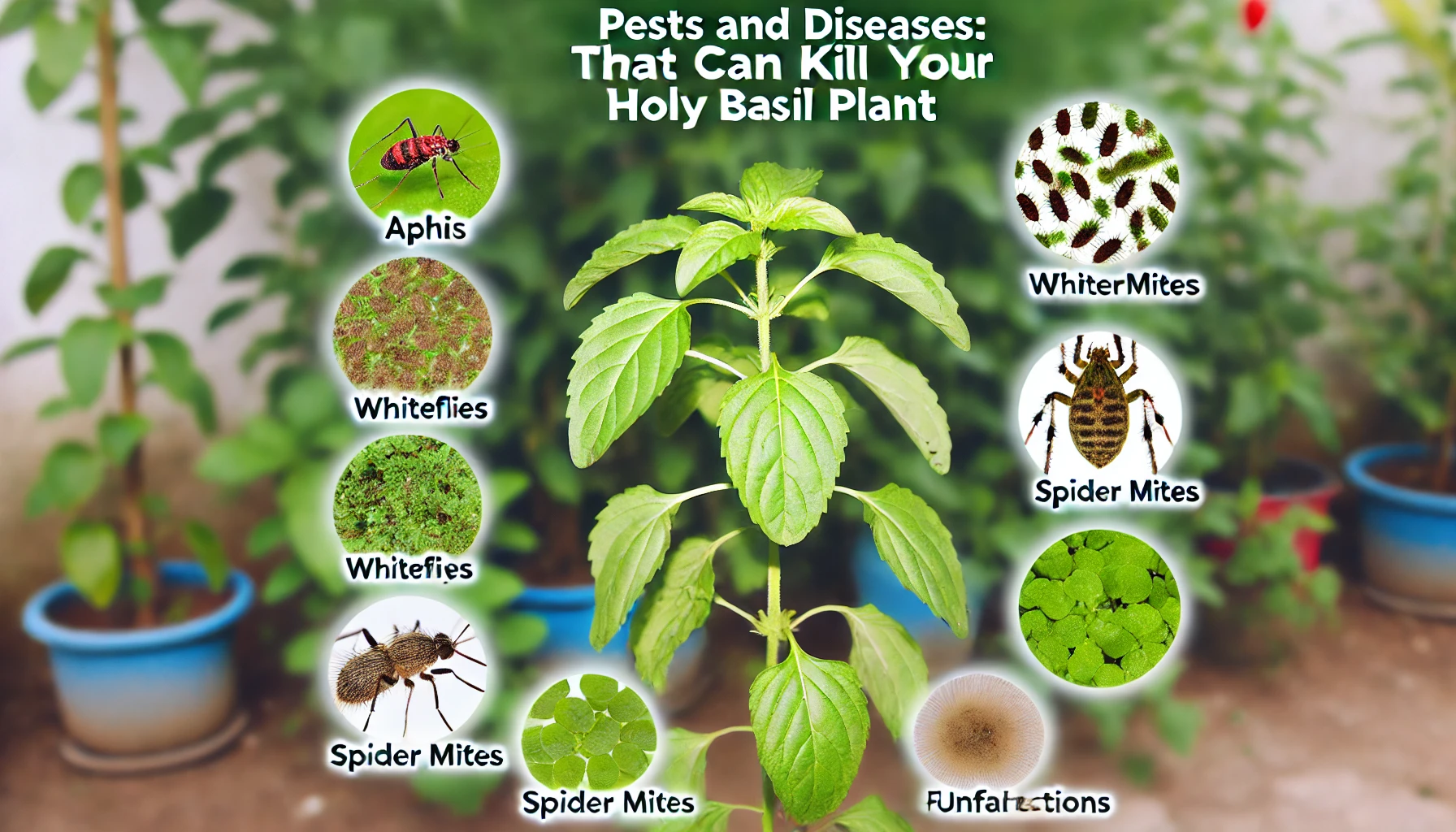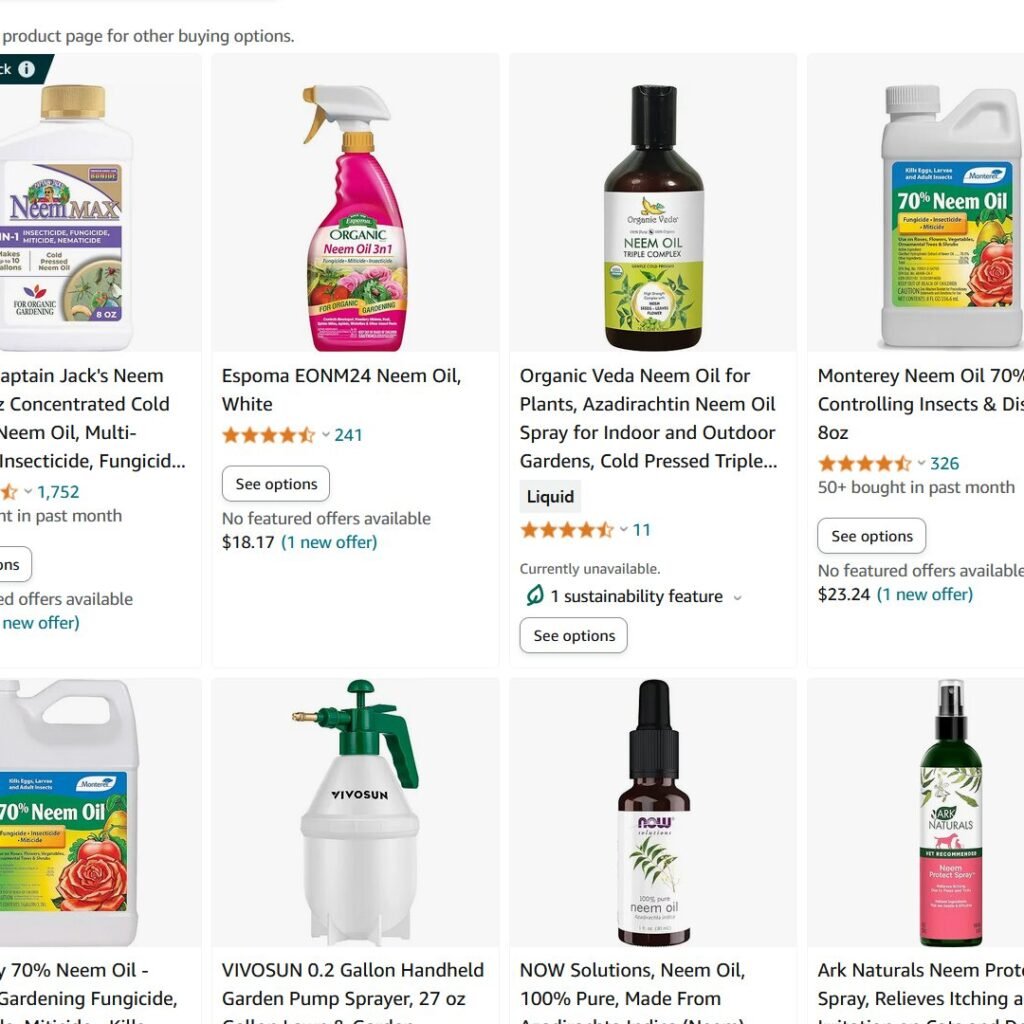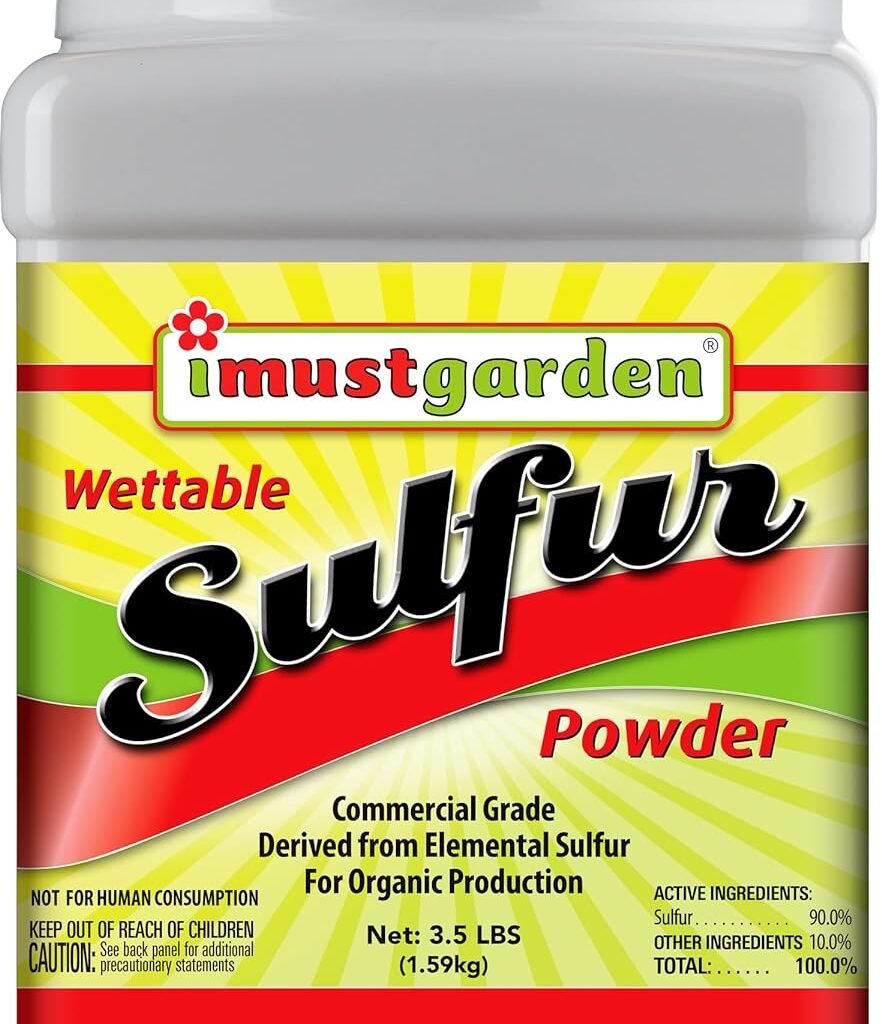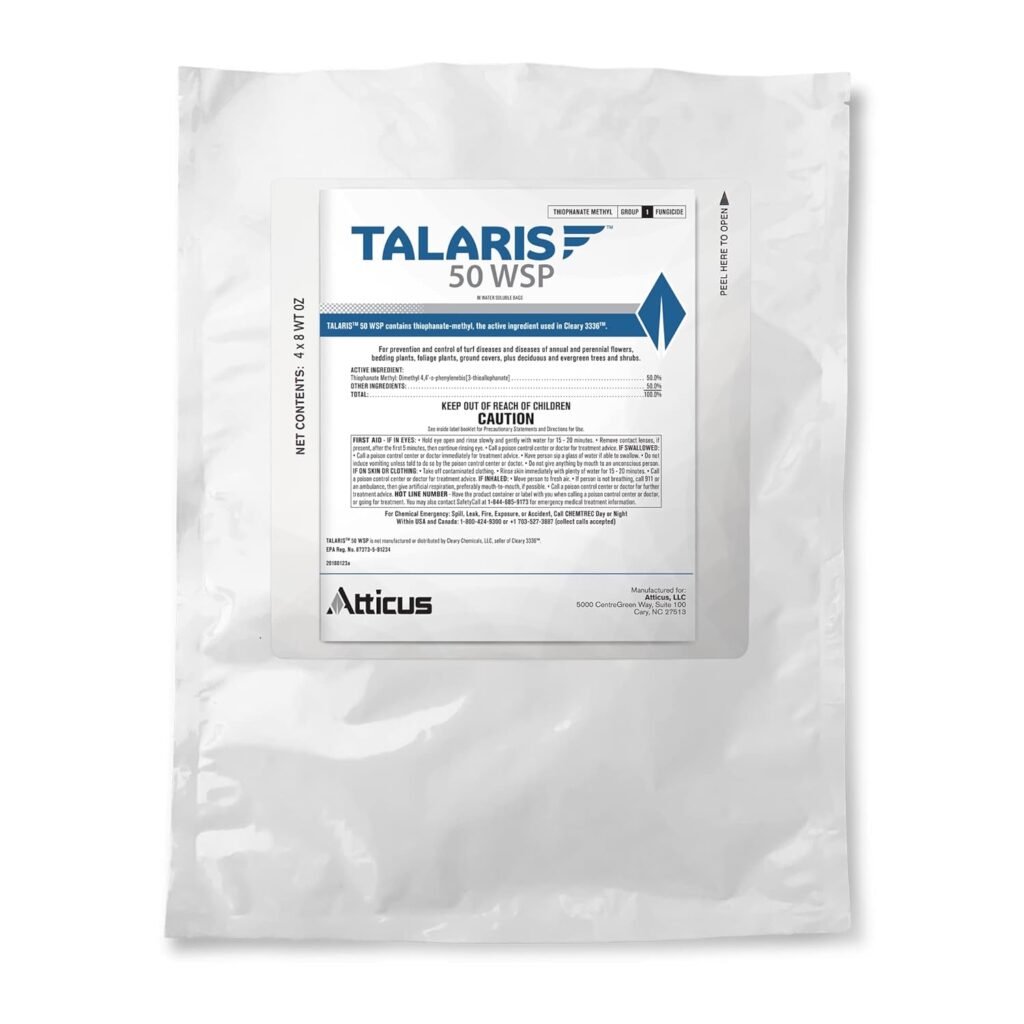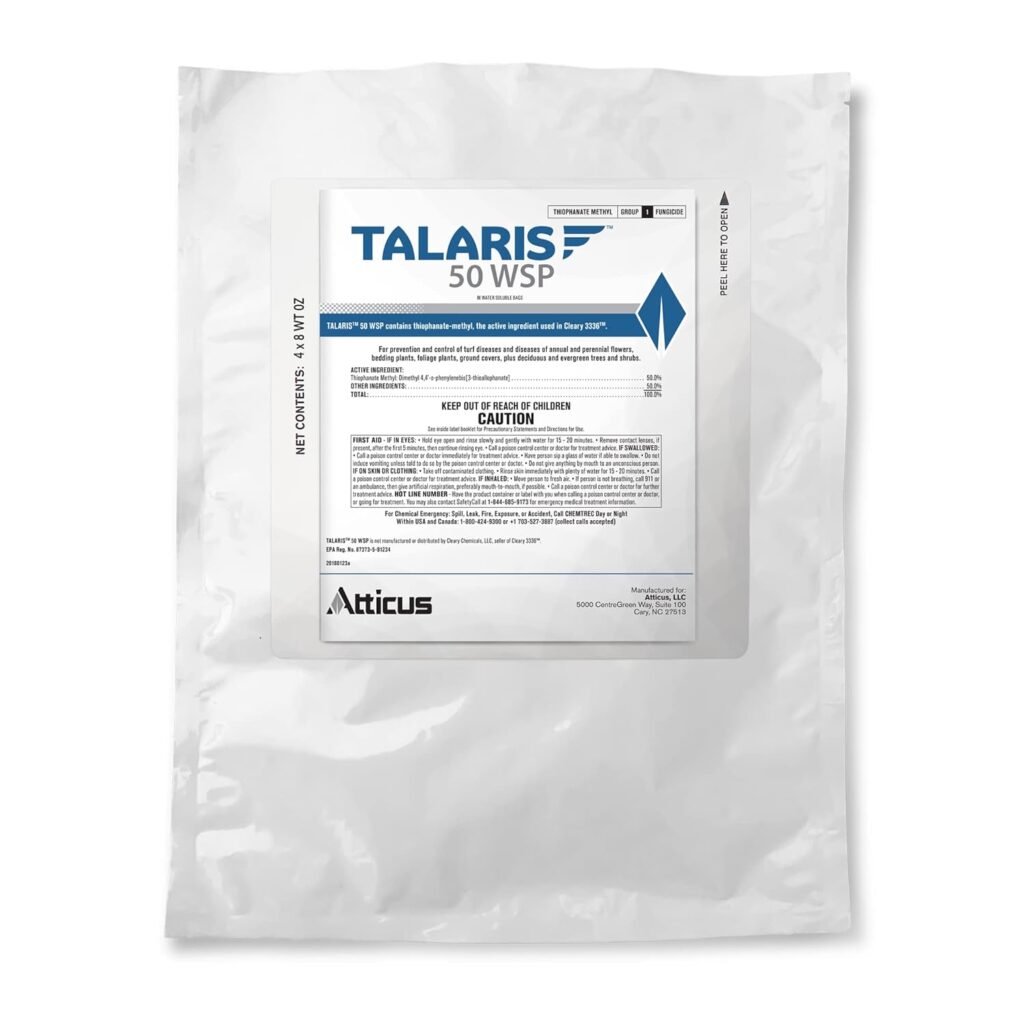Tulsi, also known as Holy Basil, is a resilient herb, but it can still fall victim to various diseases. Recognizing the symptoms, understanding the causes, and implementing effective cures and prevention methods are essential for maintaining the health of your Tulsi plants.
- Powdery Mildew
- Symptoms of Powdery Mildew:
- White, powdery spots on the leaves, stems, and flowers.
- Leaves may become distorted or yellowed.
- Cause of Powdery Mildew:
- Fungal infection caused by airborne spores, favored by warm, humid conditions.
- Cure for Powdery Mildew:
- Prevention from Powdery Mildew:
- Ensure good air circulation around plants by spacing them adequately.
- Avoid overhead watering to minimize moisture on foliage.
2. Downy Mildew
- Symptoms of Downy Mildew:
- Yellow patches on the upper surface of leaves, with grayish-purple fungal growth on the undersides.
- Leaves may wilt and eventually die.
- Cause of Downy Mildew:
- Fungal infection triggered by high humidity and cool temperatures.
- Cure for Downy Mildew:
- Organic: Spray affected plants with a solution of copper fungicide mixed with water.
- Chemical: Apply fungicidal sprays containing mancozeb or chlorothalonil.
- Prevention from Downy Mildew:
- Water plants early in the day to allow foliage to dry before nightfall.
- Remove and destroy infected plant debris to prevent spread.
3. Fusarium Wilt
- Symptoms of Fusarium Wilt:
- Yellowing and wilting of leaves, starting from the lower branches and progressing upwards.
- Brown discoloration in the vascular tissues of the stem.
- Cause of Fusarium Wilt:
- Fungal pathogen Fusarium oxysporum infecting the plant’s vascular system.
- Cure for Fusarium Wilt:
- Organic: Apply a bio-fungicide containing beneficial microorganisms to suppress fungal growth.
- Chemical: Use fungicidal drenches containing systemic fungicides like thiophanate-methyl.
- Prevention from Fusarium Wilt:
- Plant disease-resistant varieties of Tulsi.
- Avoid overwatering and maintain well-drained soil conditions.
4. Root Rot
- Symptoms of Root Rot:
- Wilting and yellowing of leaves, stunted growth, and eventual collapse of the plant.
- Dark, mushy roots with a foul odor.
- Cause of Root Rot:
- Fungal pathogens like Pythium and Rhizoctonia thriving in waterlogged soil conditions.
- Cure for Root Rot:
- Organic: Improve soil drainage by amending with perlite or sand and apply compost tea to encourage beneficial microbial activity.
- Chemical: Apply fungicidal drenches containing active ingredients like thiophanate-methyl or metalaxyl.
- Prevention from Root Rot:
- Use well-draining soil mix and pots with adequate drainage holes.
- Water plants thoroughly but allow the soil to dry slightly between waterings.
By being vigilant about the symptoms, causes, cures, and prevention methods of these common diseases, you can protect your Tulsi plants and ensure their health and vitality throughout the growing season.
